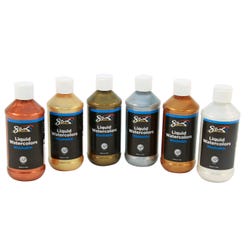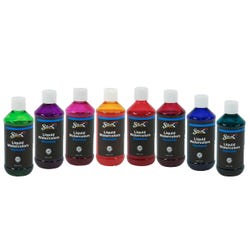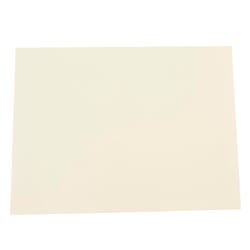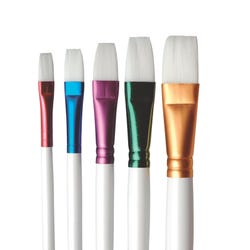Deckle-edged Paper Sculpture Flower

Description
Lesson Plan and Artwork by Phyllis M. Annett
Using basic paper sculpture techniques, students will construct a three dimensional flower.
Objectives
- Recognize paper sculpture as an art form and experience and utilize the basic techniques of it to create a three dimensional flower form.
- Realize that the studies of Art, Science, History and Math are linked together in their projects.
Supplies Needed
Sax® Liquid Watercolors, Metallics, 8 oz bottles, 6 Color Set
Sax® Liquid Watercolors, Fluorescents, 8 oz bottles, 6 Color Set
Sax® True Color Liquid Watercolors, 8 oz bottles, 8 Color Set
Sax® True Flow White Taklon Watercolor Brush Set, White, Assorted Sizes, Set of 5
Sax® Heavy Weight Art Paper, Assorted Colors, 12"x18", Pack of 50
Sax® Acid-Free Watercolor Paper, White, 140 lb, 18"x24", Pack of 100
Sax® Genuine Canvas Panels, White, 12"x12" Sax® True Flow Varnish, 1 Gallon
Sax® Paper Based Clay, 1 lb.
Miracle Sponges, Pack of 12
*Here are the supplies needed for this lesson plan for reference. Find a convenient carousel of shoppable products for this lesson below.
Standards
Creating
Anchor Standard #1: Generate and conceptualize artistic ideas and work.
Presenting
Anchor Standard #4: Analyze, interpret and select artistic work for presentation.
Responding
Anchor Standard #8: Interpret intent and meaning in artistic work.
Connecting
Anchor Standard #10: Synthesize and relate knowledge and personal experiences to art.
Instructions
1
Inform students that paper sculpture is a true art form and that they will be using basic techniques of it to create a three dimensional flower. Paper sculpture dates back to China as early as 105AD. With the invention of paper made from parts of fish netting, bark, rag and hemp, people have turned a two-dimensional product (paper) into the three dimensional art form of paper sculpture. Show students examples of paper sculpture such as the work of 17th century, English artist Augustine Walker whose work is still displayed in the Maritime Museum in Greenwich, England, or the work of Dutch artist A. Van Omeringh.
2
Using 140lb Sax Watercolor Paper, demonstrate basic paper sculpture techniques: curling, scoring, folding, tearing, bending and the creation of complex curves to cause shadows within the sculpture. Have students try the same. Give students the definition of "deckle edge": a rough untrimmed edge left on the paper by a deckle or produced artificially. Inform students that they will be tearing flower petal shapes to leave a deckled edge. This gives special interest to their flower.
3
Students will be painting and designing both sides of watercolor paper with liquid watercolors in regular, metallic and fluorescent colors to use for the flower parts. The sheets will also be varnished with Sax Tempera Varnish so that students can bend and shape the paper better. Show the art of collage artist Eric Carle and abstract painter Jackson Pollock that illustrate surface designed papers.
4
Show photos of flowers that follow a circular design such as zinnias, mums, daisies and sunflowers. Have students realize that the study of plants and flowers is part of the study of natural science. They will need to use math skills to cut a 7" circle from watercolor paper and draw three or four concentric circles on it. This will be both the base of the flower and the guide from which to position the flower petals.
5
Students will pick a color palette and paint both sides of their watercolor papers using such techniques as bold brush stokes, sponging, dotting, stippling and overlaying of color. When papers are dry on both sides, varnish just one side of them.
6
Students will tear petal and leaf shapes from the papers and use paper sculpture techniques to form them and give them depth. A deckled edge will be formed as they tear the paper and that those deckled edges will be painted separately before the petal shapes are glued around the concentric circle base of the flower.
7
Varnished, doubled sheets of colored paper can be cut and curled into accents to place within their flower forms.
8
Use Sax Paper Clay to form the center of the flower, which will also be painted and varnished.
9
A Sax 12" Canvas board will be the base for the completed flower and can be painted with Sax Acrylics as a background for the flowers.
10
Use Tacky Glue to attach the flower and leaves to the 12" Square Canvas Backboard. Enjoy, discuss and display the paper sculpture flowers.










